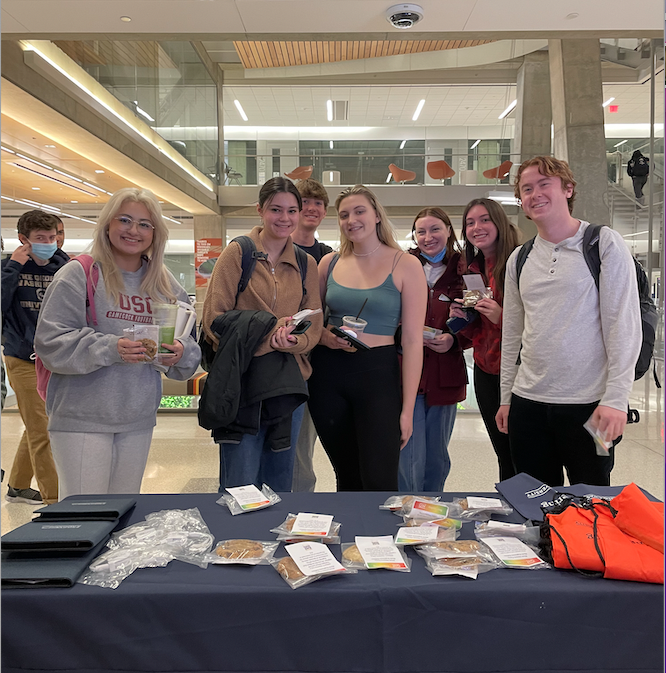During the month of February, the GW Engineering Marketing and Communications team hosted a Black History Celebration booth every Tuesday on the first floor of the Science and Engineering Hall. These events were held to commemorate Black History by recognizing the achievements and contributions of African Americans.
Students traveling from class to class would stop by to grab a free cookie with a black history fact attached to learn about the achievements of black engineers throughout history. We all have a responsibility as members of the GW Engineering community to learn about and appreciate the black history that has led us to today. The engineers highlighted, despite significant societal and professional challenges, rose above and accomplished great careers.
From these events, students had the opportunity to learn about the following black engineers:
-
Katherine G. Johnson was a mathematician who did the trajectory analysis for America’s first human spaceflight in 1961 and the orbital mission of John Glenn in 1962.
-
Mary W. Jackson was the first black female engineer at NASA who worked to impact the hiring and promotion of the next generation of NASA’s female mathematicians, engineers, and scientists.
-
Dorothy Vaughn was NACA’s first black supervisor and an expert at FORTRAN, a computer programming language for scientific and algebraic applications.
-
Granville T. Woods, the first black mechanical and electrical engineer after the Civil War, is often called the “Black Edison.” He was awarded 27 patents between 1884 & 1903, the most famous being the multiplex telegraph.
-
Hattie T. Scott Peterson is believed to be the first black woman to hold an engineering degree and join the U.S. Army Corps of Engineers.
-
Samuel J. Scott was one of the first four black engineers hired at NASA’s Langley Research Center and a member of The National Technical Association where he worked to advance STEM education & opportunities for African Americans in technical fields.
-
Treena Livingston Arinzeh, a stand-out in the field of biomedical engineering, developed the first Tissue Engineering and Applied Biomaterials Laboratory at the New Jersey Institute of Technology in 2001, published over 60 journal articles, and received countless awards.
-
Kimberly Bryant is a thought leader in tech inclusion because of her work as Founder and Executive Director of Black Girls CODE and the countless ways she has been honored for working on bridging the digital divide for girls of color.
-
Jerry Lawson, a self-taught electrical engineer, gaming pioneer, and one of the few Black engineers in Silicon Valley in the 1970s, transformed the video game world with his invention Fairchild Channel F, for “fun."
-
William T. Fauntroy was a Tuskegee Airman and the first black civil engineer hired by the Washington Metropolitan Area Transit Authority where he was promoted to urban planner for the portion of the metro built in D.C.
-
George E. Alcorn, Jr. is an engineer, physicist, professor, and award-winning inventor with 8 patents on over 30 inventions, including the Imaging X-Ray Spectrometer.
-
Ursula Burns is a mechanical engineer and veteran of corporate evolution who became the CEO of Xerox in 2010, making her the first black woman to lead an S&P 500 company.


